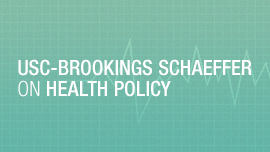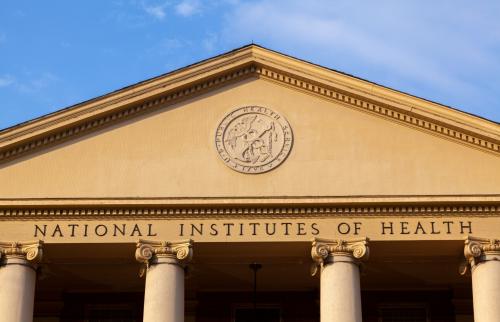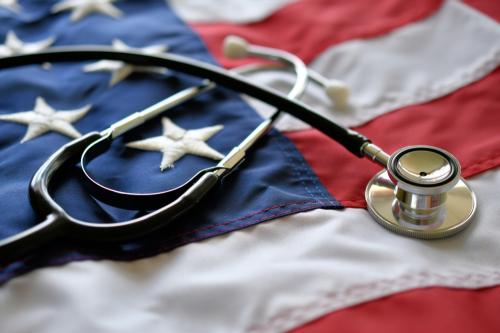As a follow up to his seminal New Yorker articles, “The Cost Conundrum” and “The Cost Conundrum: Redux,” surgeon and author Atul Gawande provides an update on the very interesting town of McAllen, Texas and their health care spending problem. Six years ago Atul Gawande went on a fact finding mission to McAllen– a community with double the average Medicare spending ($14,000 versus $7,000)– to explore what the IOM calculated to equal a third of all health expenditures including unnecessary, redundant, and medically and scientifically ineffective tests, procedures, and treatments. He found a system in denial and with high rates of hospital admissions, evasive-expensive surgeries, and outpatient home health care.
Gawande returned to McAllen recently and was greeted by an entirely new system. Inpatient visits had fallen by 10 percent; home health care spending was down 40 percent; ambulance rides were down 40 percent; and cost per beneficiary dropped almost $3,000 resulting in nearly half a billion dollars saved. What happened in Texas was unprecedented.
But why?
Five Lessons from the McAllen Experience
Evidence is hard to ignore, especially if it is out in the open.
Data are important and with more data becoming available faster, clinical behavior can change relatively rapidly. This phenomenon is quite apparent when physicians review their own performance and quality scores compared to their peers. Most experience a bit of denial at first and then start to unpack data to improve care. For example, Arkansas’s Payment Improvement Initiative provides each physician with quarterly cost and quality information for certain bundled episodes of care. Each physician can see how much they spend compared to others performing the same service. When some providers saw their first quarter results, many called the Arkansas’s payment center to find how they could to reduce costs. These are the same conversations that took place in McAllen.
Physicians also do not have all the right information.
Price transparency is a two way street. Physicians know what treatment to recommend given the presentation of a patient, but few are likely to know or consider the patient cost of that treatment or the charge amount to the insurance company. For example, physicians referring patients to home care services in McAllen had no idea it was costing thousands of dollars per patient. As physicians and provider-entities, like accountable care organizations (ACOs), begin to take on more risk they are likely to seek out this information more readily.
Local clinical leadership and clinical knowledge are important in promoting health.
Clinical leadership is an important element to health reform. Physicians spend seven or more years in training to become doctors and are in the best position to identify the needs of their population. They know what to do, but are often not able to practice the type of medicine they want and need to achieve the best results because of reimbursement system that limits the practice of medicine. In McAllen, it was a group primary care doctors who were simply practicing good by-the-book medicine that helped change the system. Doctors were able to provide enhanced educational services in the clinic to support the overall health of the patient rather than limited to symptom-service-treatment practice style.
More evidence shows payment and delivery reforms may be working.
In the story of McAllen, Gawande learned that an ACO-like medical group employing an alternative payment model that allowed the physicians to share in savings supported the cost-effective medicine that ultimately helped contain costs. Before the physicians became part of the medical group they did not have the resources to support patients’ health. In McAllen, Gawande discovered the local clinical leaders who had embraced the new health model were more profitable and provided better health care.
The biggest opportunities for cost reductions are with complicated patients.
Chronic diseases like diabetes have often been thought of as the patient type that will break the bank. These patients are more likely to utilize high intensity services and more services in general to keep their condition managed. Now, they are golden opportunities for innovations that produce clear savings. Investing in more intensive education to help the patient self-manage their condition can substantially decrease their demand for health care services, reducing expenditures and allow physician, hospitals, and ACOS to capture some of those savings.
Many payers, including public payers, have adopted more rigorous health care reporting and utilization standard for providers. Additionally, many states are creating stronger oversight programs for Medicaid. With the cost war heating up as medical costs appear to again be on the rise after a brief slow down, it is likely providers will be more closely scrutinized. Given the proliferation of many reforms, we may see, admittedly optimistic, more McAllen-like stories around the country.
The Brookings Institution is committed to quality, independence, and impact.
We are supported by a diverse array of funders. In line with our values and policies, each Brookings publication represents the sole views of its author(s).




Commentary
5 things Atul Gawande learned on his return to McAllen, TX
May 8, 2015